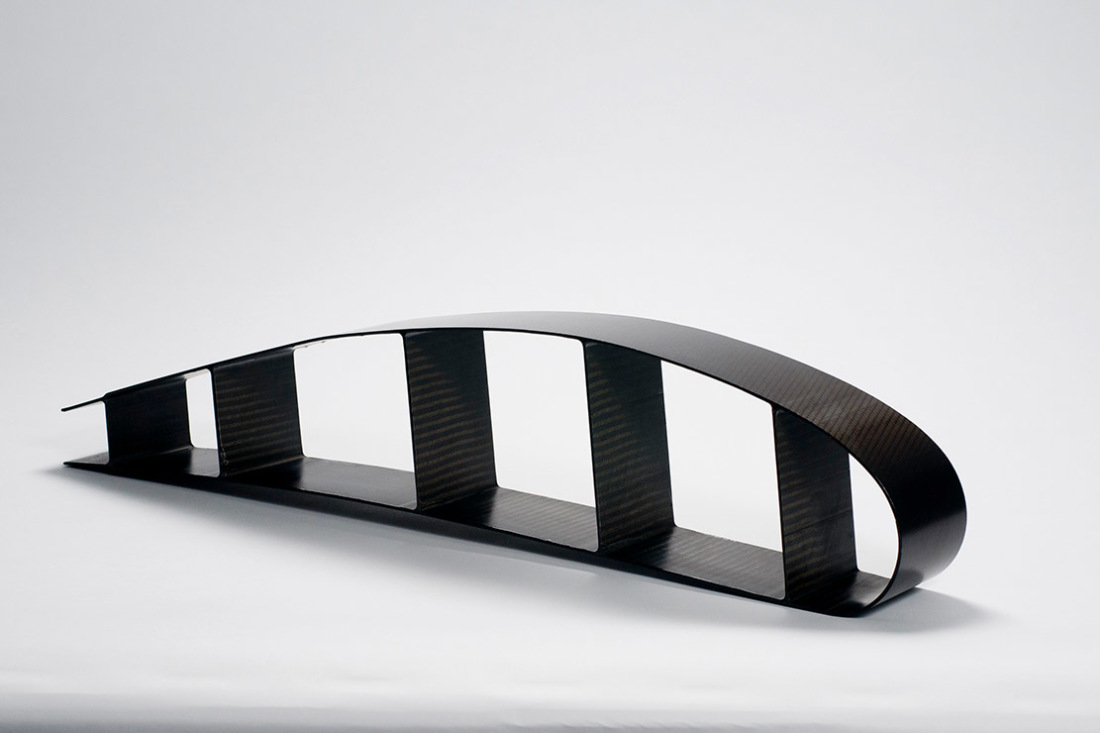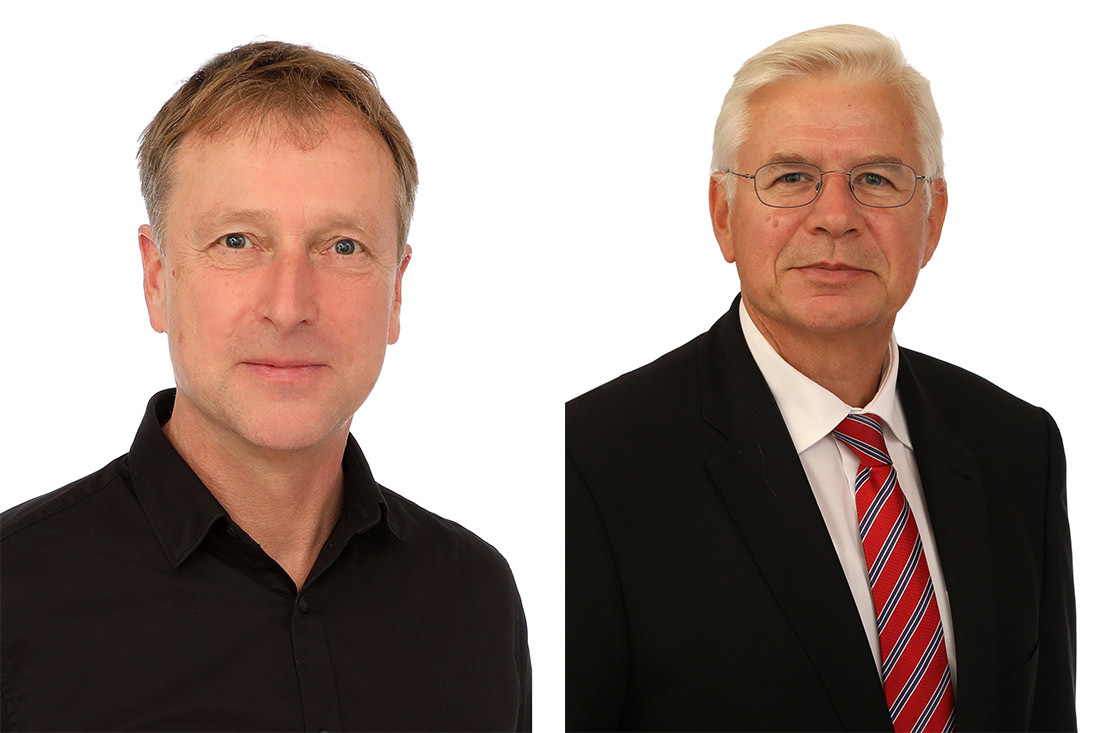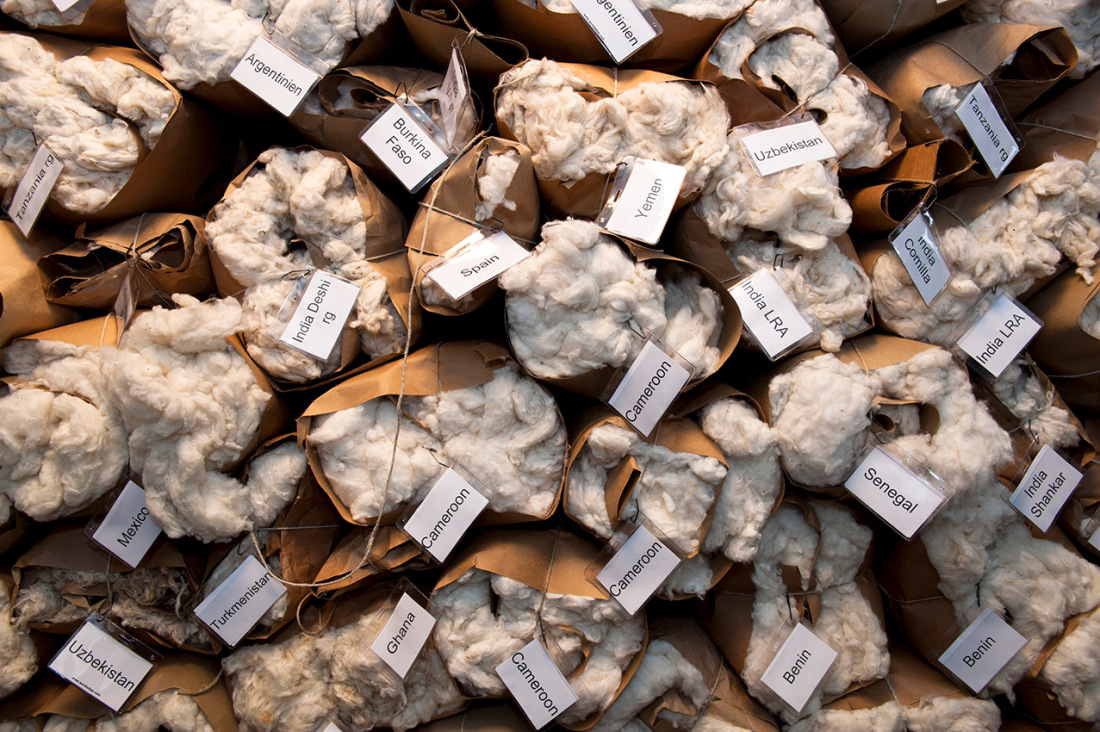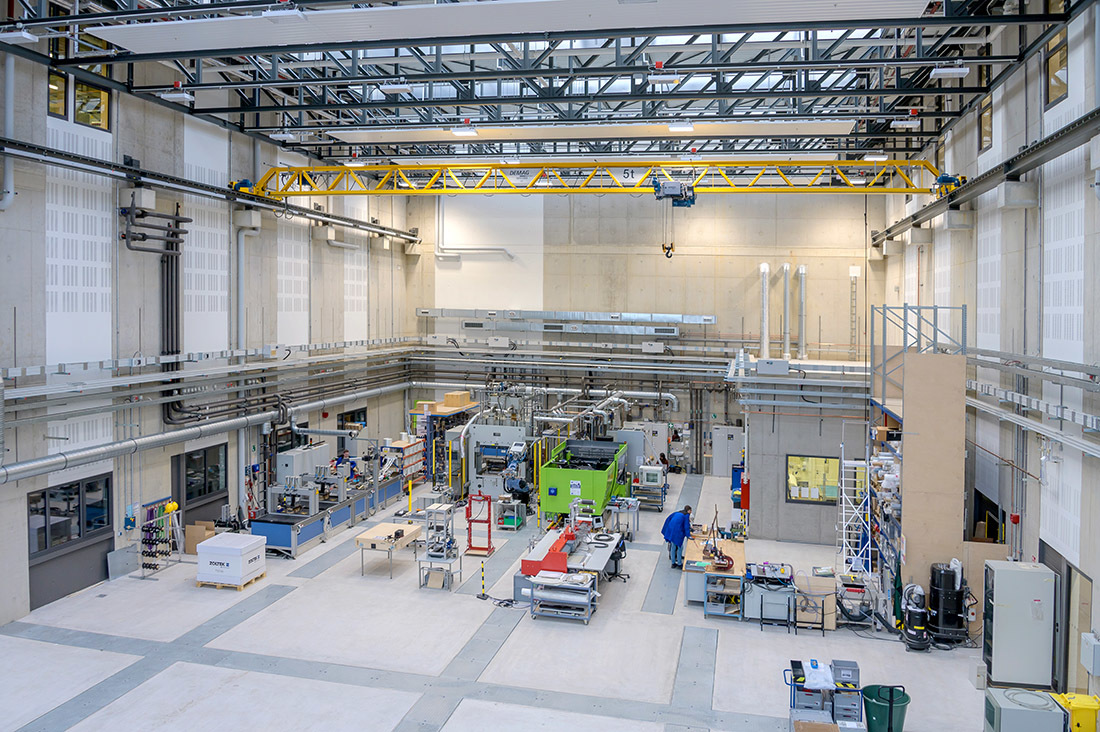50 years of the Bremen Fibre Institute
Success storiesThe Bremen Fibre Institute is working on tomorrow’s lightweight construction solutions for industry today

Lightweight construction is sturdy, resource-efficient and, of course, lightweight, making it the go-to solution for all types of products. Next-generation fibre composites, a class of materials that combines high-tensile fibres and plastics, play a central role in this. The Bremen Fibre Institute (FIBRE) has been conducting research into these and other materials since 1969. The institute is now celebrating its 50th year.
Lightweight construction using fibre composites has become a firm fixture in modern industry thanks to its many advantages. Components made using this material are very light and provide high performance in terms of their mechanical properties. Not only are they very robust and rigid, they also handle dynamic stresses particularly well and are corrosion resistant. Such components provide a particularly efficient way of saving energy and resources in the manufacture and operation of products, but the materials are very demanding in terms of their product-specific ‘composition’, manufacture and component design. Today, the market is dominated by two materials: fibre-glass reinforced plastic (FGRP), used in the construction of modern wind turbines, and carbon fibre reinforced plastics (CFRP), used in the manufacture of high-performance products for the space and aeronautics industries, for example. Thanks to its excellent mechanical properties, carbon fibre is “the king of reinforcing fibres”, according to Christoph Hoffmeister, a process engineer at FIBRE since 2002.
The independent institute, which runs two key sites at Bremen University and the newly opened ECOMAT research centre (see information box) in Airport-Stadt Bremen, can also call on the expertise of the Composite Technology Center (CTC) in Stade and its fibre laboratory at the Bremen Cotton Exchange.

Components for aircraft
The research, development and optimisation of fibre-reinforced composite materials, their manufacture and their use in products have been the focus of the Bremen Fibre Institute for many years. The majority of the institute’s 55 employees now work in this area, creating new and improved components for aircraft, such as a reconfigured landing flap, window frames and lighter components for inside the plane. They also work on materials with custom characteristics for applications in the space industry.
A particularly interesting and creative aspect of their work is the transfer of materials and related technologies into the products of other industries and markets. These include crash-absorbing elements for small aircraft, orthotics and components for sports cars and agricultural machinery.

The success story begins in the docks
“The partnerships we enter into with networks, universities, institutes and companies in a variety of sectors are particularly inspiring. This sharing of knowledge is very important to us,” says Hoffmeister. At the same time, these contacts represent a considerable added value for Bremen as a hub for trade and industry. The Fibre Institute is currently working on around 30 major research projects. Alongside its research into lightweight construction and fibre composites, FIBRE is also working on ‘technical textiles’ which can be integrated into a wide range of products. Examples include airbags, air filters, hollow fibres for dialysis membranes and even violin strings.
“Carbon fibre is the king of reinforcing fibres.”
Christoph Hoffmeister, process engineer at FIBRE
The foundations for this were laid more than 100 years ago. Just like many other success stories in Bremen, the story of FIBRE begins in the docks. By the 19th century, the Hanseatic city had become the main destination for cotton imports in central Europe. The emigration ships returning to Bremen from the USA were looking for a suitable cargo to bring back, and opted for cotton. The Bremen Cotton Exchange was founded in 1872, and 60 years later the first method for testing fibre quality was developed here. The cotton laboratory was founded in Bremen in 1955, with Dr Fritz Hadwich its first head. As its remit broadened, the demands made of it became more complex, so the decision was made in 1969 to split off the cotton and wool laboratories into a separate institute. The Fibre Institute was born.

It is particularly thanks to the work of Professor Axel S. Herrmann, head of the institute since 2001, that FIBRE has focused heavily on lightweight construction in recent years. This led to new partnerships with Airbus and other companies in aerospace engineering. When FIBRE consolidated its organisation by introducing a quality management system and accreditation for its laboratory in 2005, it changed the public face of the institute. The number of employees and of research and development projects grew steadily over the following years.
Today, half of the institute’s employees work at ECOMAT in Airport-Stadt Bremen, close to Airbus. In its new premises, which cost around €73 million to build, the Fibre Institute works with its partners in industry and research on the lightweight construction solutions of the future. Alongside the anchor tenant Airbus, partners include the German Aerospace Center (DLR), the company Testia and the Leibniz Institute for Materials Engineering (IWT). “Working with partners and neighbours” is how Hoffmeister describes one of the advantages of the new research centre, which only opened in May.

The bridge between research and application
Following the opening of ECOMAT, a range of academic initiatives ensures that the bridge between research and real-world application remains in place. With seven lectures at Bremen University and Bremerhaven University of Applied Sciences, and around 50 dissertations and student projects every year, the institute plays an important role in the education of engineering students. A number of networks between trade, industry and research have also developed over recent years. The conditions could not be better for a successful future, and as a commercial hub Bremen is playing a key role in this.
Bastian Müller
Ministry of Economic Affairs, Ports and Transformation
ECOMAT project manager
+49 (0) 421 361-32292
Success Stories
Bremen is Germany’s sixth-largest industrial hub in terms of revenue. Whether the sector is aerospace, food, automotive, shipping or steel production, Bremen has always been a major player.
Learn moreNew perspectives on our beloved Hanseatic city – we take to the skies and show Bremen from above.
Learn moreNew settlement in Bremen: for three decades, the Brüning Group had its company headquarters in Fischerhude. In the summer of 2023, the rapidly expanding company moved its head offices to the Überseeinsel in the Überseestadt (the New Harbour District) in Bremen. A modern brick-built office block with a glass facade now stands where Kellogg's once stored rice.
Learn more
